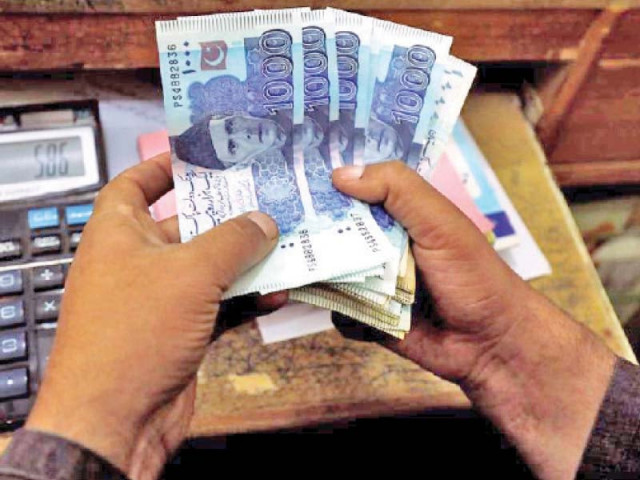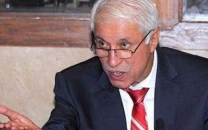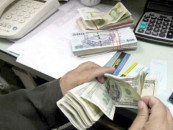Govt borrowing crowds out private sector
Banking sector tilts heavily towards state lending due to high returns

The Pakistan Economic Survey 2024-25 has highlighted a persistent structural imbalance in the country's banking sector, where lending to the government continues to dominate over credit disbursement to the private sector.
Commercial banks have largely preferred investing in risk-free government securities, such as treasury bills and Pakistan Investment Bonds (PIBs), which offer secure and high returns, especially given the elevated interest rate environment that prevailed for most of FY24.
The policy rate remained at a record high of 21% during much of the year as part of State Bank of Pakistan's (SBP) efforts to curb inflation. This made government securities particularly attractive to banks, leading to a further rise in their share within banks' asset portfolios.
In terms of domestic debt, the government relied mostly on long-term borrowing through PIBs and Sukuk for financing the fiscal deficit. During the period, Rs2.4 trillion worth of treasury bills were retired. The government also introduced a new two-year, zero-coupon bond through which Rs610 billion was raised. These measures helped improve the maturity profile, reflected by the extension of the average time to maturity of the domestic debt from 2.9 to 3.5 years, according to the survey.
"Regarding the auction of domestic debt securities, robust market participation was witnessed," said the report. Total bids received for treasury bills were Rs28.230 trillion (acceptance of Rs9.473 trillion), PIBs Rs23.540 trillion (acceptance of Rs9.682 trillion) and Sukuk Rs4.889 trillion (acceptance of Rs1.562 trillion). The government followed a calibrated acceptance strategy to manage cost and rollover risk.
As a result, credit to the private sector remained subdued throughout the year. High borrowing costs discouraged private sector firms from taking new loans while macroeconomic uncertainty and weakened business confidence also dampened demand for credit. Furthermore, restrictions on imports and foreign exchange shortages earlier in the fiscal year adversely impacted industries that rely on imported raw material and machinery, further reducing the need for private borrowing. The survey suggests that private sector credit growth was either stagnant or negative in real terms when adjusted for inflation, signalling constrained access to affordable financing.
On the other hand, the government's borrowing requirements remained elevated due to a large fiscal deficit and the need to meet substantial debt servicing obligations. Consequently, banks found it easier and safer to park their funds in government debt rather than riskier private sector lending.
This behaviour has caused a "crowding out" effect, limiting credit availability for productive sectors such as small and medium enterprises (SMEs), agriculture and export-oriented industries – sectors that are essential for economic diversification, job creation and sustainable growth.
Recognising this imbalance, the State Bank of Pakistan (SBP) introduced various policy measures to promote private-sector credit. These include the Export Finance Scheme (EFS), Long-Term Financing Facility (LTFF) and SME Asaan Finance (SAAF), designed to offer concessional financing to priority sectors. However, the uptake of these facilities has remained moderate, largely due to the high cost of borrowing, uncertain economic prospects and low-risk appetite among both lenders and borrowers.
The Economic Survey cautions that unless private sector credit conditions improve, the country's broader goals of industrial modernisation, technological upgrading and export competitiveness may remain unfulfilled. The limited flow of financing to the private sector restricts the potential for new investment, expansion of productive capacity and diversification of the economy.
This structural weakness poses a long-term challenge to Pakistan's growth trajectory and must be addressed through coordinated fiscal, monetary and structural reforms aimed at reducing the government's borrowing needs and enhancing the creditworthiness of private enterprises.
Financial inclusion remains a strategic priority but continues to face hurdles. The survey notes encouraging growth in microfinance and branchless banking sectors, yet large segments of the population – particularly women and rural communities – remain underserved.
The microfinance sector reported significant expansion, with active borrowers increasing from 9.56 million in December 2023 to over 12.34 million by the end of 2024. Total deposits in microfinance institutions rose from Rs597 billion to Rs732.9 billion over the same period. However, the average loan size decreased from Rs59,988 to Rs48,971, indicating smaller loan amounts that may limit economic empowerment potential.
Branchless banking, a vital tool for reaching the underserved population, saw positive momentum as well. The number of branchless banking accounts increased 11% to 126.7 million in December 2024, with transaction volumes growing 38% to over 5.4 billion during the year. The value of these transactions surged 42% to Rs25.8 trillion, highlighting growing reliance on digital financial services.
Despite these gains, infrastructure gaps, limited digital literacy and low trust in formal financial institutions continue to impede broader financial inclusion.






















COMMENTS
Comments are moderated and generally will be posted if they are on-topic and not abusive.
For more information, please see our Comments FAQ